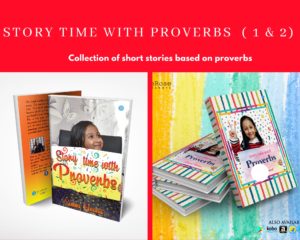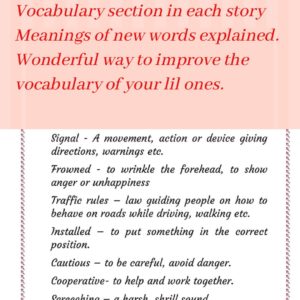 Hello everyone. Welcome to my website. Are you an aspiring children’s book author or a bookworm? If you want to know what happens before your favourite book lands in your hands, then this article will be a good read for you. I will talk about the thrilling journey of children’s books from imagination to publication.
Hello everyone. Welcome to my website. Are you an aspiring children’s book author or a bookworm? If you want to know what happens before your favourite book lands in your hands, then this article will be a good read for you. I will talk about the thrilling journey of children’s books from imagination to publication.
There are three phases from imagination to publication:
- Writing phase
- Publishing phase
- Post publishing phase
All three phases are equally important. Let’s discuss them.
Finding inspiration
I was always interested in reading books and inculcated reading habits at an early age for my daughter. The search to find a storybook on proverbs along with morals was my inspiration to write children’s books. I had a great critic and an admirer of my stories at my house. This was a big advantage for me.
But, apart from the love for your kid, you can try different sources for inspiration.
- Time with kids: Spend some time around kids from your family or neighbourhood. Have some playtime or conversation with them and you might discover tons of ideas.
- News stories: Browse through newspapers or the internet for stories and incidents. Something might click and feel worthy of being spun into stories.
- Childhood experiences: Delve deeper into your childhood memories and see if any incident can be a good story for kids.
- Morals: There are a variety of social causes that deserve special attention in the children books genre. Issues like bullying, honesty, friendship, mental health, environmental issues, monetary issues, diversity etc. are good.
- Festivals: Weave stories or books around festivals celebrated by different communities.
- Fairy tales: Fairy tales are a favourite for kids. Try spinning new, creative stories or just reimagining the stories under different circumstances.
But remember that the journey of creating children’s books is a challenging task. Children’s book authors have to impress two sets of people: your primary audience( kids) as well as their carers or parents, who will decide if your books are worthy enough to be bought.
Categories of books
There are different types of books for different age categories. Before you embark on your journey of creating children’s books, the first thing to decide would be the age group and genre. Different types of books for kids are:
- Board books: These books are suitable for kids in the age group of 0-3 years. They are made of thick paperboard which is strong enough to survive bites or tears from kids.
- Picture books: These books are suitable for the age group of 2-5 years. They have illustrations all over with a few words.
- Chapter books: They are sometimes referred to as early reader books suitable for the age group of 6-10 years. The book is divided into several chapters, either with a single story or a collection of stories.
- Middle-age books: They are suitable for kids in the age group of 8-12 years old and have few illustrations.
- Young adult books: These books are suitable for teenagers in the 13-18 years age group. They have few illustrations and longer stories compared to middle age books.
The writing phase
There can be a separate blog on the categories which I will try to write in the future. But, if you have decided the category, you need to have a basic idea and prepare an outline. This is the beginning of the writing process. Write the characters or the basic plot of the story. Don’t think of making a perfect draft at this stage.
- Think of an engaging title for your book that does justice to your story.
- Decide on your main characters and antagonists along with any special features or powers.
- Think about different plots and how the situation evolves.
- Don’t drag the story as you have word limitations. Provide some conflicting situations and how things resolve. Let it be a nice adventure for your readers.
- What do you want the kids to gain from the story? Think carefully about the point you want to make.
- Try to keep it simple and age-appropriate.
- Make your story engaging without trying to be preachy.
Check out this article for some tips.
The editing process
Carefully go through your draft for any typos, grammatical errors or rewriting of any part of the story once you have completed writing. Don’t believe the myth of a perfect first draft. Even the best writers have flaws in their first draft. Make sure that your words are age-appropriate and avoid any abusive words. In my books, I included a vocabulary section with the meaning of some words explained. I believe reading improves vocabulary, so it is a good place to learn new words. If you feel some words will be tough for your young readers, include a vocabulary section.
Self-editing should always be done and it should not be replaced with professional editing and proofreading.

Illustrations
Illustrations are a very significant part of children’s books. Board books are full of illustrations with few words. As the age progresses, illustrations reduce and word count increases. In self-publishing, the author has to hire an illustrator. But, in traditional publishing, the company hires the illustrator. Either way, an illustrator is required and they should be able to portray the story with their illustrations.
When I was searching for illustrators, I asked a few of them to provide a sample. I provided everyone with the same description, but all of them had their own style. Then I asked my daughter which illustration seemed good for the story and coincidentally, we both liked the same image. So, after careful consideration, I finalised that illustrator.
So as an author, you need to make a careful decision about which image exactly correlates with your story.
Publishing phase
Once you have rechecked and self edited your book, it’s time to start the publishing process. Get some beta readers to provide feedback and work on them.
There are different publishing options to choose from. But these options have different names in different forums.
-
- Traditional publishing company: The publishing company takes care of the expenses and pays royalty to the author. The author is not required to make any financial contribution and enjoys earnings from the first book sale. As the company has invested in the project, they have an upper hand in the decision-making process. Some of the reputable traditional publishers are Penguin Random House, Harper Collins and Macmillan.
- Self-publishing company: The publishing company charges some fees based on the services required by the author. The company can handle editing, graphic design, and formatting if the author pays. The author receives a higher royalty, but given the amount of investment, they would require a certain number of book sales to break even. The author here has an upper hand in the decision-making process.
- Independent publishing: In this, the author will hire an editor, formatter, graphic designer and other contractors and pay them as per the contract. It is a tiresome process, but all the earnings belong to the author.
Kindle publishing: This publishing option might not be suitable for children’s books as few parents approve of screen time at a young age. Kindle direct publishing is a good option to take ownership of your book with less stress.
I have a blog on various publishing options which can be informative for you. You can apply for an ISBN and copyrights for your book or the company can handle these legal matters. The book goes for printing after the draft is finalised.
Post publishing phase
Once the book is published, the post-publishing process begins. This is the longest and never-ending phase. Book promotion can be started before the book launch and continued after the book launch. As an author, it is important to grow your brand. Get on social media channels to promote your books. This was a tough thing for me, as I am not that much of a social media fan, but if I don’t promote then how will anyone know about my books? So, I think of it as a vaccination which can be uncomfortable but essential.
You can create a website where you can promote books and post about events. You can also use it for blogs to showcase your writing skills. Try a giveaway contest which will attract readers.
Notable works
Before you begin your journey, read lots of children’s books and you will get an idea about how you should write. It is not mandatory to copy your favourite author’s writing style; just take inspiration from them. As you write, you grow as a writer and develop your unique style. Experiment with different types of writing and see what suits you. Here are some notable children’s book authors and their books.
- J. K. Rowling: J. K. Rowling is the author of award-winning Harry Potter novels. They are a good read for teenagers and adults. Harry Potter books have been adapted into movies as well.
- Julia Donaldson: Julia Donaldson is a renowned and award-winning author with numerous published works. Some of her notable works include The Gruffalo, The Princess and The Wizard.
- Ronald Dahl: Roald Dahl has published numerous notable books and some of them have been adapted in movies. He has books like Matilda, The Witches and The Twits to his name.
- Dr Seuss: Dr Seuss is another award-winning author with notable works such as The Grinch, The Cat in the Hat and The Cat in the Hat comes back.
My experience
Getting my ideas on paper was easy, but getting them published was the tough part for me. I had a healthcare background with no connections to the literary world, which made my journey as a children’s book author a difficult one. On top of that, I was not much of a social media user. But if I can do it, I am very sure you can too. You need to do research on what category and genre you want. During your writing phase, don’t stress about the publishing phase. Just write and rewrite until you are happy with your story.
Once writing is done, research various publishing options and decide. If you want to hire editors or illustrators, check out Instagram or LinkedIn where you will find great talent.
As the book launch gets closer, gear up for book promotions. Social media channels are a great way to promote your work, but they can be mentally taxing too. You need to draw a line and think about your mental peace. There are various ways to promote your work.
I created a Fb author page, Instagram page, LinkedIn, Fb group to promote my work. Then I created my website where I post blogs and also engage in writing health articles for a healthcare company. I have learnt a lot in the past four years and still have a lot to learn.
If you dream of becoming a writer, you need determination and hard work. Your first draft will be messy and crap, but don’t let it demotivate you. Read, write and edit a lot.
Have a glimpse of my books
Story time with proverbs part-2
Can you guess which category my books fall into? Comment below.
If you feel this article is informative about the process of crafting children’s books from imagination to the publishing phase, then feel free to share it with others. I wish you luck to succeed in your journey of becoming a children’s book author.